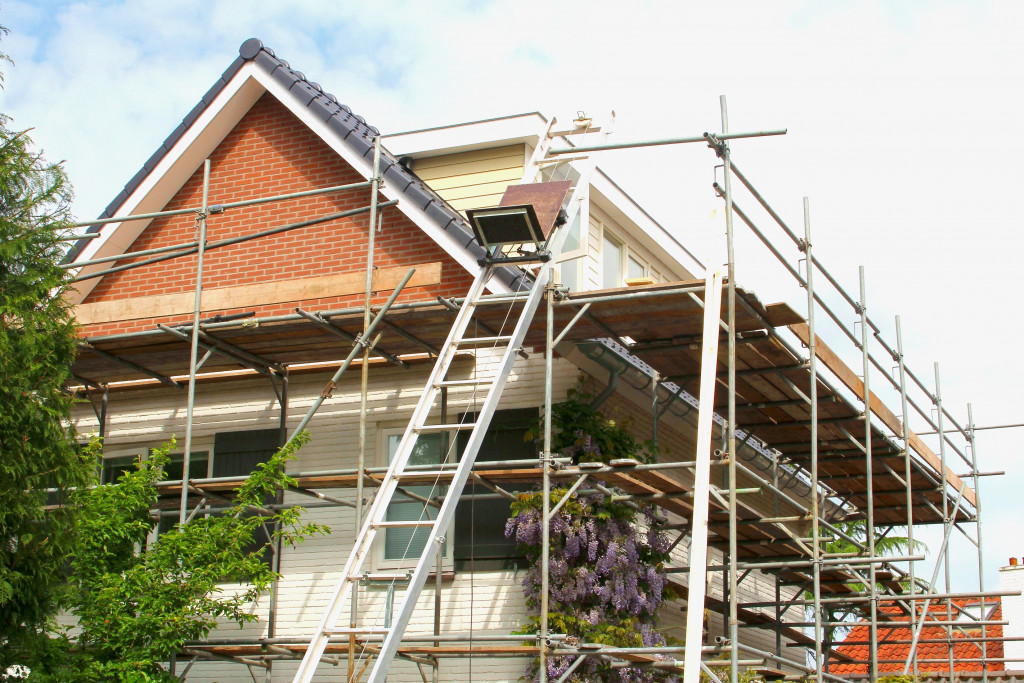Home is our place to relax and be comfortable. It’s the haven of our well-being, making it necessary to continuously improve it and create a more appealing, safe, and comfortable space. Through home remodeling or renovation, you can enhance your quality of life and develop an energy-efficient and eco-friendly home. Moreover, adding space and functionality can increase the value of the property.
You must understand the expenses needed in the home improvement process and the purpose of renovating your home. We will get into each topic in this blog post.
How to Fund Your Home Improvements
Before doing a home renovation, you need to allocate a budget or find home improvement financing. Fortunately, there are different options to pay for your renovations.
Home Improvement Loans
There are unsecured personal loans offered by banks and online lenders where you don’t need to use your house as collateral.
Home Equity loans
You could apply for a home equity loan, which is also known as a second mortgage. This can be paid in a lump sum over several years in fixed monthly payments.
Mortgage Refinances
A mortgage company can offer refinancing, which replaces your current mortgage. It will give you a new interest rate which could be better than your old one.
When to Consider Home Renovation
There are several reasons why you should renovate your home aside from beautification. Below, we list out the different things you need to consider so you can decide if it’s time to improve your home.
Expanding the Family
Along with the expansion of your family, it is good to expand your home to add a room for your baby. If you love your living space, you might opt to develop your basement or attic into another bedroom.
Enhancing Your Home’s Appearance
To lift the mood and vibes of your home, you need to change its appearance. You might want to make it look relaxing or align it with your style and personality. Painting the wall or adding new features to specific locations in your house can do the trick.
Acquiring More Storage Space
If you have problems decluttering and figuring out where to keep your things, you might want to add more storage space. Building shelves on your walls can significantly add storage without taking too much space in your home. You can also eliminate old closets, drawers, or frames that no longer serve their functions.
Creating an Energy-Efficient Home
To reduce your electricity bills, what you can do is to integrate insulation in your homes. This way, your house can be cost-effective in minimizing air conditioning bills during summer and heating bills during the winter.
Remodeling An Empty Space
Empty nests equal empty space. If your kids have their own family or have already left the nest, you can repurpose their old bedroom. You might want to convert it into an office, studio, or extension of the master bedroom.
Purchasing A New Home
It is better to renovate the house before moving in. You can repair and remodel the house without having to work around furniture and appliances. Plus, you have the time to plan the arrangement of your home and figure out where your furniture should go.
Which Home Improvements Should Be Prioritized
In doing home renovations, you can decide whether you will build a new room or redesign your bathroom or kitchen. You can hire a renovation services company or contractor to achieve your goals. However, selecting which projects to prioritize and work on first can be challenging.
If you have a limited budget, you would prefer renovations that can make your home more functional and increase its selling value. Here are some tips to learn what comes first in your home renovations.
Assessment of Home’s Status
Hire professionals to inspect your home and verify the improvements needed for your home. Ask them to create a list of enhancements that should be implemented in your house.
Check Home’s Safety and Repairs
Before redesigning your house:
- Focus on improving safety features first.
- Ensure that the materials used in your roof, floors, windows, gates, and fences are durable enough to withstand weather conditions.
- Address essential repairs to prevent further damages to your houses, such as leaks and insulation concerns.
- Enhance the interior and exterior of the house before predicaments arise.
Plumbing, HVAC, and Electrical Wiring
Before a significant remodeling process, works that are done beneath the floors and behind the walls should be prioritized. For example, installing new electrical, plumbing, and air conditioning systems should be accomplished before painting and flooring.
Drywall, Framing, and Painting
After addressing the plumbing, electrical, and HVAC, you can proceed with the drywall to achieve a seamless surface. Once the walls are smooth, start painting it aligned with your preference. Painting the walls can change the overall look of the house. For a calmer look, you might want to have pastel or white paints. Meanwhile, industrial-look requires darker accent paints.
Improved Features
Install cabinetry, lighting, furniture, fixtures, and decor to create more functionality. Choose home decorations that match the overall look of your house.
In the process of home improvement, you need to check your finances and your house to see what you can afford and put first. With planning and prioritizing, you can ensure a quality transformation of your home without breaking the bank.


